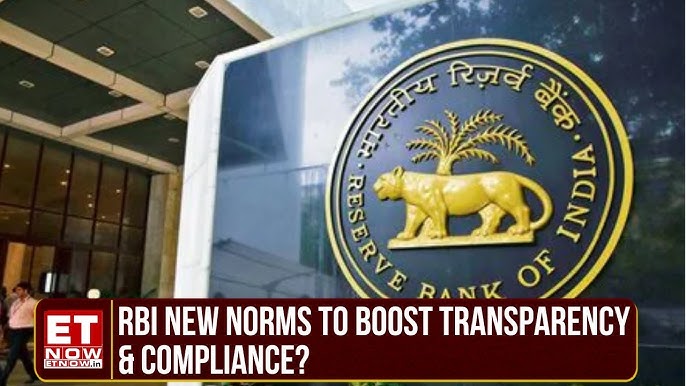
Own a Share in Premium Residential & Commercial Properties Starting from Just ₹15 Lakhs. Secure, Profitable, and Accessible Investments Await!
RBI Tightens Rules for P2P Lending Platforms: What You Need to Know
The RBI has tightened the rules for P2P lending platforms to ensure a safer and more transparent lending environment. Our latest blog breaks down the key changes, what led to them, and how they impact both lenders and borrowers. We help you navigate the risks and rewards of P2P lending under the new regulations.
ALTERNATE INVESTMENTSP2P LENDING
8/19/20243 min read


The Reserve Bank of India (RBI) has recently introduced new guidelines for Peer-to-Peer (P2P) lending platforms that operate as Non-Banking Financial Companies (NBFCs). This move is in response to several regulatory violations found among some platforms, prompting the RBI to strengthen its oversight to ensure transparency and protect investors.
What is P2P Lending?
P2P lending is a method of financing where individuals can lend money to others through online platforms, bypassing traditional banks. These platforms act as intermediaries, connecting borrowers directly with lenders, making the process simple and often faster.
Why Did the RBI Revise the Guidelines?
The RBI discovered that some NBFC-P2P platforms were violating their regulatory duties. These violations included:
Promoting P2P lending as an investment product: This misled participants about the nature of their involvement, suggesting it was a safe investment rather than a lending transaction with inherent risks.
Offering liquidity options: Some platforms gave the impression that lenders could withdraw their money anytime, similar to a savings account, which is not the case.
Acting as deposit takers and lenders: Instead of merely connecting lenders and borrowers, some platforms were directly handling funds, blurring their role as intermediaries.
These practices went against the core principle that P2P platforms should only facilitate lending, not become direct participants in the financial transaction.
Key Changes in the New Guidelines
To address these issues, the RBI has introduced several new rules:
Prohibition of Credit Enhancements: P2P platforms can no longer offer any form of guarantee or assurance to lenders about the repayment of their money. This means that if a borrower defaults, the loss must be borne by the lender, with all risks clearly disclosed upfront.
Cap on Lending Exposure: The total amount a lender can lend across all P2P platforms is now capped at ₹50 lakh. If a lender wants to lend more than ₹10 lakh, they must provide a certificate from a chartered accountant confirming a minimum net worth of ₹50 lakh.
Restrictions on Cross-Selling: P2P platforms cannot sell insurance or other products unrelated to the loans offered on their platform. Their focus must remain on facilitating loans between lenders and borrowers.
Transparent and Non-Discriminatory Lending: The platforms must have clear policies to match lenders with borrowers fairly. They cannot favor certain borrowers or lenders, and must ensure that all participants are properly matched before disbursing any loans.
Strict Fund Management Rules: All fund transfers between lenders and borrowers must be done through escrow accounts managed by a bank-trustee. This ensures that funds are only used for their intended purpose, with no cash transactions allowed.
What Does This Mean for Lenders and Borrowers?
For lenders, these changes mean a more transparent and secure environment, but also a reminder that P2P lending carries risks. The cap on lending limits ensures that individual exposure is controlled, and the prohibition of credit enhancements emphasizes that lenders should carefully assess risks.
For borrowers, the new rules aim to create a fairer system with more transparent matching of lenders. Borrowers will continue to benefit from access to funds but must meet all necessary criteria.
Conclusion
The RBI's updated guidelines are a significant step toward making the P2P lending space safer and more transparent. While these changes tighten the operational framework for P2P platforms, they ultimately aim to protect both lenders and borrowers from potential risks. As these rules come into effect over the next three months, participants in the P2P lending ecosystem should prepare for a more regulated and clearly defined environment.
We're glad you enjoyed this post on "RBI Tightens Rules for P2P Lending Platforms". In our newsletter, we delve deeper into these topics and provide actionable tips and strategies to help you achieve your goals in Alternative Asset class.
Stay ahead of the curve and subscribe to our newsletter for the latest insights and solutions!
Still Stuck? Ask Away
Write us at hello@realproft.com with any questions you have about real estate investing. We're here to help you find the perfect way to invest in your future!
Email us: hello@realproft.com
Social media
Subscribe to our newsletter to stay up-to-date with all the latest news and updates. By subscribing, you will receive regular emails containing valuable information, exclusive promotions, and exciting announcements. Don't miss out on this opportunity to join our community and be part of the conversation.
Call us: +91 7678255904
